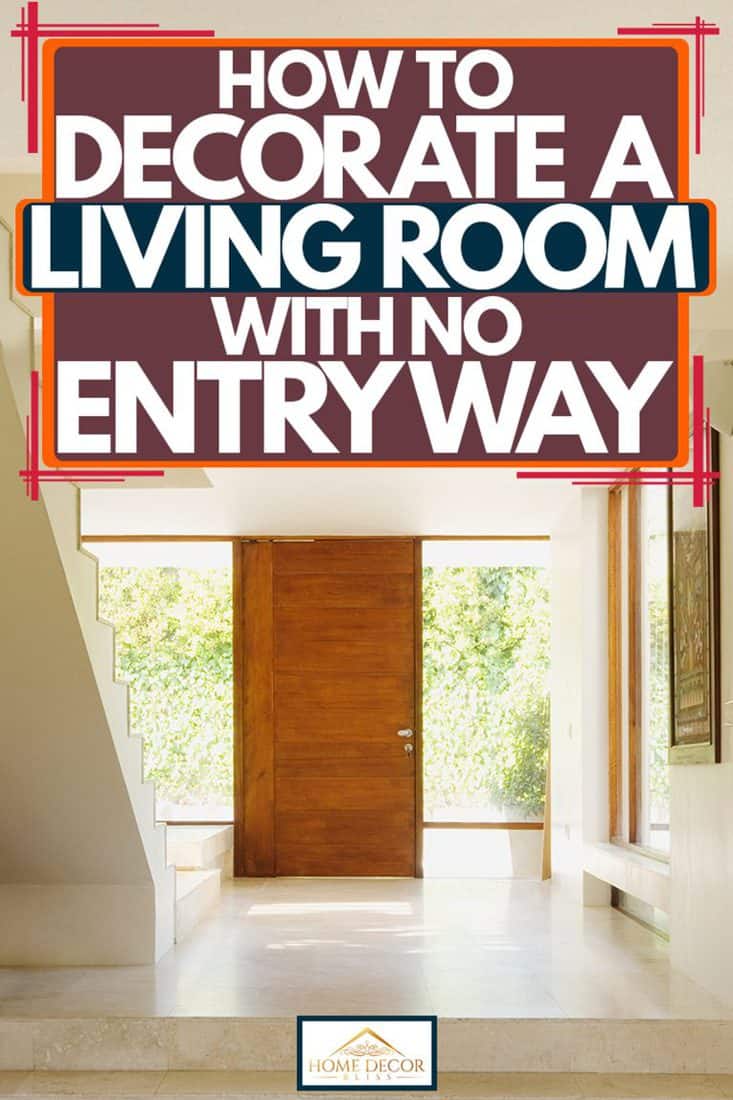Reimagine Your Space: Entryway in Living Room Ideas
The modern home is a study in fluidity, where traditional boundaries between rooms blur. Nowhere is this more evident than in the merging of the entryway with the living room. This design choice presents both a challenge and an opportunity to redefine how we experience our living spaces. Instead of a stark separation, we’re seeing homeowners embrace the art of the subtle transition, crafting welcoming entryways that seamlessly flow into the heart of the home.
The concept of a dedicated entryway is a relatively recent development in home design. Historically, homes were smaller and often lacked a designated space for greeting guests and shedding outerwear. As homes grew larger, so too did the desire for a defined area to transition from the outside world. This shift in architecture led to the formal entryway, often a separate room or hallway.
Today, with the rise of open-plan living, that separation is being reconsidered. Many modern homes, particularly apartments and smaller houses, lack a traditional entryway. Instead, the front door opens directly into the living room. This presents a unique set of design considerations, requiring a delicate balance between functionality and aesthetics. How do you create a sense of arrival while maintaining the openness of a combined living space?
This is where the beauty of a well-designed entryway within the living room comes in. By incorporating clever design elements, strategic furniture choices, and a keen eye for detail, you can define this hybrid space in a way that feels both intentional and inviting. It’s about creating a visual journey, guiding the eye from the moment you step through the door.
The key to success lies in embracing the challenge and viewing it as an opportunity for creative expression. Think of this space as a microcosm of your home’s overall aesthetic. The way you choose to define this area can set the tone for the entire living experience.
Advantages and Disadvantages of an Entryway in the Living Room
Before diving into specific design ideas, it’s important to weigh the pros and cons of this layout. Understanding the inherent benefits and challenges will allow you to make informed decisions that align with your lifestyle and design preferences.
| Advantages | Disadvantages |
|---|---|
| Creates a sense of spaciousness and openness. | Can be challenging to define the space and create a clear entryway zone. |
| Allows for more natural light to flow into the living room. | Potential for clutter to be more visible from the living area. |
| Provides flexibility in furniture arrangement. | May lack privacy compared to a separate entryway. |
Best Practices for Designing an Entryway in Your Living Room
Creating a functional and visually appealing entryway within your living room is achievable with careful planning. Here are some best practices to guide you:
1. Define the Entryway Zone: Use area rugs, furniture placement, or changes in flooring material to visually separate the entryway from the rest of the living room. This helps to create a distinct zone that signals arrival.
2. Maximize Vertical Space: Incorporate wall-mounted shelves, hooks, or a coat rack to provide storage for outerwear, bags, and accessories without taking up valuable floor space.
3. Choose Furniture Strategically: Opt for a slim console table or a narrow bench that provides a surface for keys and mail while also defining the entryway area. Consider using a mirror to amplify light and create the illusion of more space.
4. Incorporate Statement Lighting: A striking pendant light or a statement chandelier hanging above the entryway zone can instantly elevate the space and create a focal point upon entry.
5. Personalize with Decor: Infuse your personality into the entryway with carefully chosen decor elements such as artwork, a small plant, or decorative trays for catching keys and loose change.
Common Questions and Answers About Entryways in Living Rooms
Q: How do I prevent my living room from feeling like a hallway when it shares space with the entryway?
A: Strategic furniture placement is key. Avoid lining up furniture along the walls, which can emphasize a hallway-like feel. Instead, create distinct seating areas within the living room to break up the space.
Q: What are some stylish storage solutions for small entryways in living rooms?
A: Floating shelves, wall-mounted hooks, and baskets placed underneath console tables offer practical storage without sacrificing style.
Q: Can I use a room divider to separate my entryway from my living room?
A: While a room divider can offer some separation, it’s important to choose one that complements your decor and doesn’t completely block the flow of light and space.
Tips and Tricks for an Entryway in Your Living Room
- Use a different color or pattern on the entryway floor to define the space.
- Add a small rug to the entryway to ground the area and provide a visual anchor.
- Create a focal point in the entryway with a piece of statement furniture or a bold piece of art.
- Use mirrors to reflect light and make the space feel larger.
In conclusion, crafting an entryway within your living room is a testament to the evolving nature of modern living. It’s a design challenge that encourages creativity, thoughtful planning, and a keen understanding of your personal style. By embracing the tips, tricks, and inspiring ideas outlined above, you can transform this often-overlooked space into a captivating prelude to the rest of your home. Remember, the most successful designs are those that seamlessly blend form and function, creating a welcoming and harmonious living environment.
Unlocking the power of microsoft bing your comprehensive guide
Unlocking portable power a guide to butane canister access
Unlocking the secrets of aarp medicare supplement plan f pricing














